Table of Contents
First Impressions on r1: An App Devoid Device
Author

Subject Matter Expert

Date

Book a call
When Rabbit inc’s CEO Jesse Lyu revealed the AI-powered r1, the first impression was “Hey, isn’t that a Game Boy?”
How wrong we were. As the keynote progressed and r1’s features were demonstrated, there was much more than what met the eye. Here were the main attention grabbers:
- We have a new operating system called rabbit OS
- Push-to-talk buttons
- Far-field mics
- 360-degree rotational eye
- Analog scroll wheel
- USB-C (we wholeheartedly approve this)
- SIM slots
But what does it mean for the future of app development? Is there even a future? Will the same tech stacks and development mode still apply? Is it even possible to make screens for this? How can developers leverage this platform?
So many questions surround r1. We are answering a few of our first impressions in this blog with the help of our Senior Software Engineer, Dibyaprakash.
The rabbit OS: Intention → Interface → Interaction
Demos of the new rabbit OS give the feeling of Siri or Alexa on high-quality performance enhancement juices. The interactions seem smart and useful.
According to the official website of rabbit OS, “The Large Action Model is the cornerstone of rabbit OS. LAM is a new type of foundation model that understands human intentions on computers.”
And it is with LAM, that rabbit OS understands what users say and gets things done as directed.
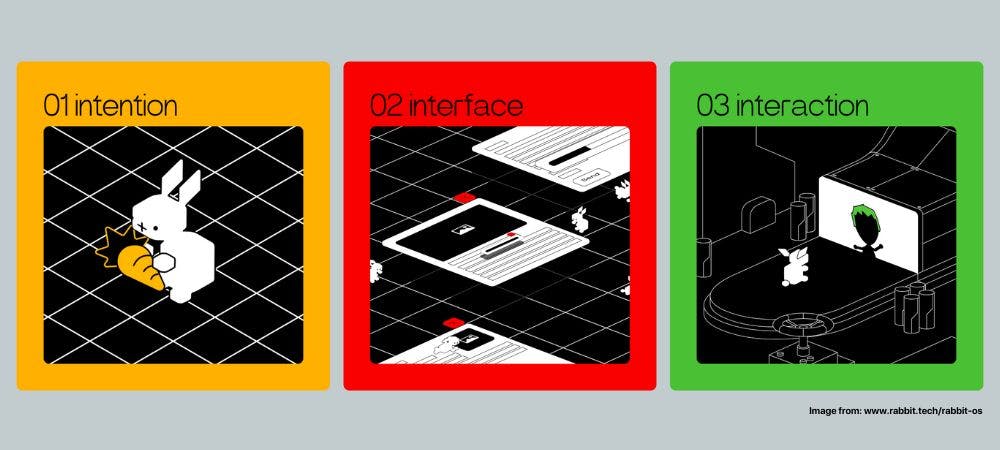
How Does It Work?
Let’s say you want to place an order from a food delivery app like Swiggy or Zomato. Then you press the push-to-talk button, say the intended order, and then it computes the results internally to give the interactive result.
For example, if you want pizza, it will give you choices and then confirm or place the order accordingly. Currently, we have demos for stock market price checks, ordering cabs, and then cases where r1 answers questions like “What is the nature of reality?”
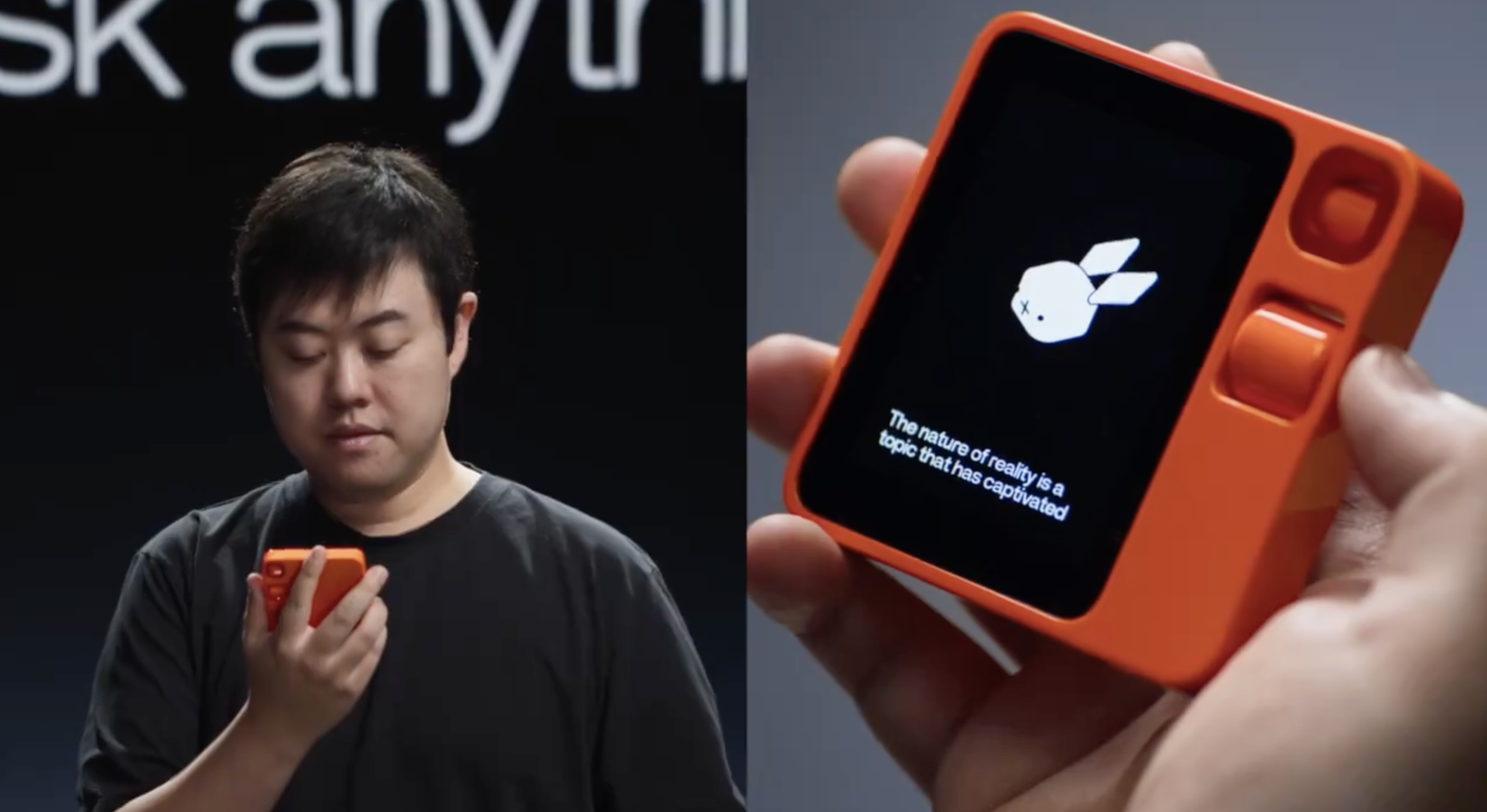
How Does r1 Change App Development? The Future Looks Minimal, and UX Focussed
The target of r1 is to do away with the concept of apps entirely. This changes how organizations, businesses, and brands interact with users entirely.
“If the r1 trend picks up, the app-based environment may end,” shares Dibyaprakash. “There will be no requirement for an app to be developed specifically for Rabbit devices. Users will log in to the required websites, such as Uber and Spotify, using the Rabbit Home interface from their personal computers. Once the login is completed, their LAM model will navigate their account on the required website to complete the task. LAM can adapt to any interface, whether a mobile app or a website.”
So, one just needs to develop a platform or a logic, which can provide a particular service. There will no longer be a need to develop individual apps for multiple devices.
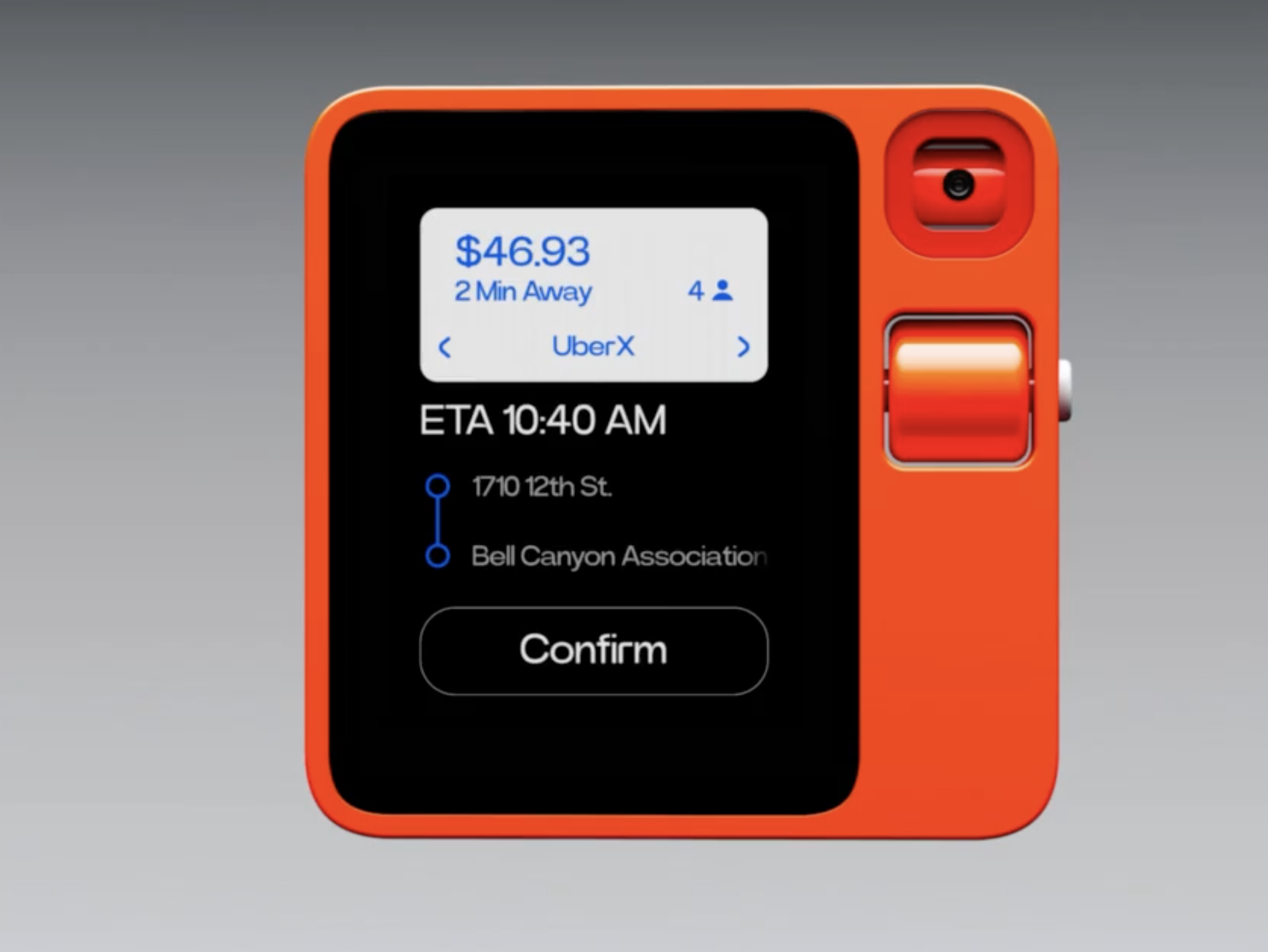
For Business Owners
The first advantage is reduced development and maintenance costs, as the app is no longer a central part of interaction. Business leaders can now direct their attention to creating personalized experiences. There is also a potential to expand the user base and attract a group of users that want the minimal approach.
But there are potential challenges as well. With r1 as a gateway to services, business owners lose the potential to influence how users interact with a brand. Marketing and discovery also will be limited to r1’s ecosystem. If the user has a specific affinity to a brand, new brands will find it more difficult to enter the market.
For App Developers
The r1 can open up uncharted avenues for developing AI-powered experiences that integrate seamlessly with the device's functionality. There will be a growing focus on core functionalities rather than fancy animations or transitions.
“The rabbit team doesn't ask developers to do anything from their end; they train and develop LAM to understand and surf through existing websites and apps,” according to Dibyaprakash. It may be the long-desired incentive to push developers to build highly efficient and valuable core features.
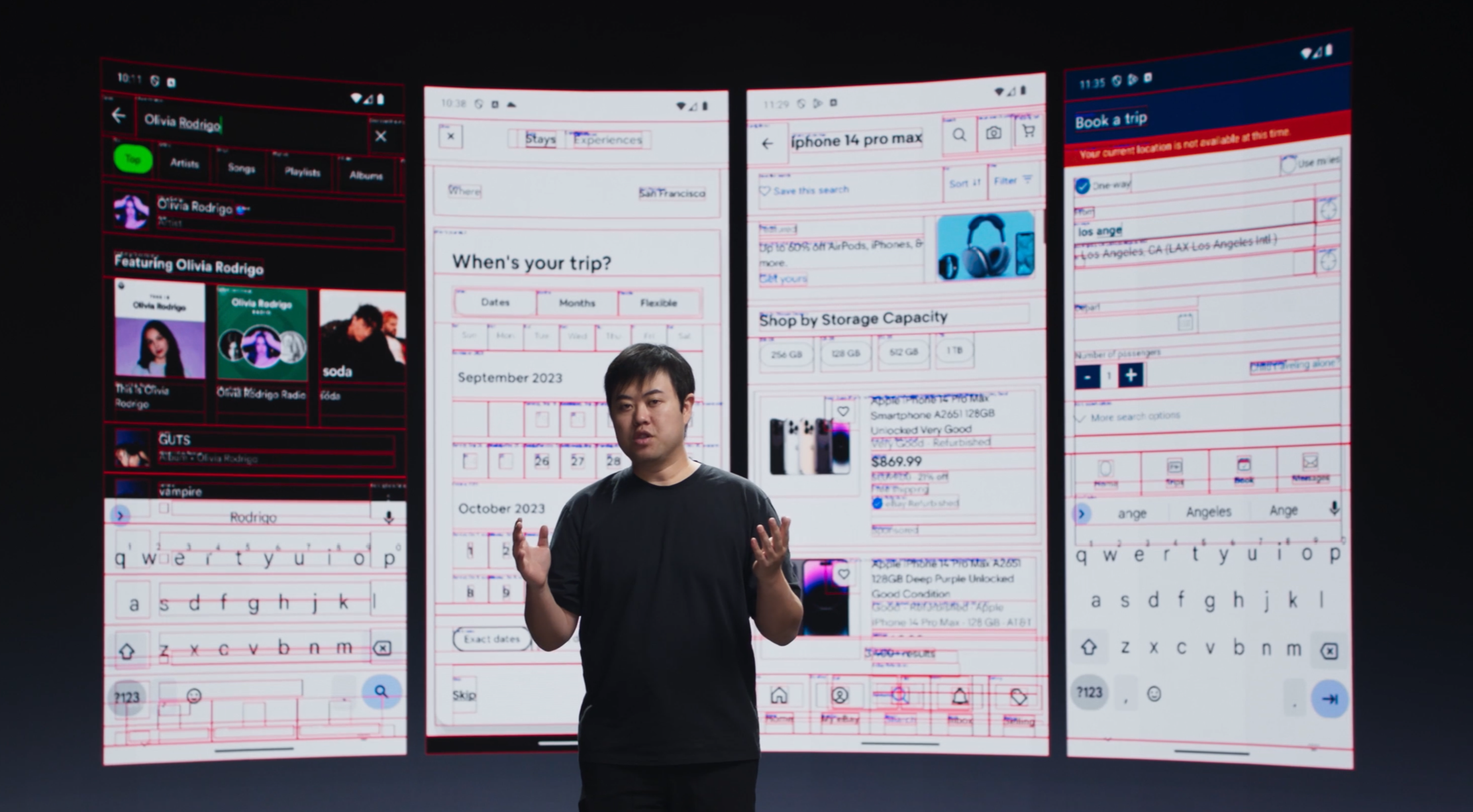
However, developing for r1 may require existing developers to undergo a learning phase. The learning curve at the moment is uncertain. Moreover, the demand for traditional app development skills could decrease if apps become less prominent. And finally, there is still uncertainty about revenue models for r1, creating uncertainty for developers about how to monetize efforts.
Predicted Responses by Major Players
Major hardware and software device organizations like Apple and Google may not find adapting to the new change difficult. Apple and Google could integrate similar AI features into their existing operating systems, offering app-less functionality alongside traditional apps. This could provide a middle ground for users hesitant to abandon the app ecosystem completely.
However, privacy and on-device processing may be an issue. Even if both companies have strong AI divisions, developing a large language model (LLM) like LAM with the r1's capabilities might be challenging.
The Future with r1: A Blue Pill, Red Pill Situation. The User Base Will Decide
The last time there was so much hype and talk about hardware and OS was in 2007 when Steve Jobs launched the iPhone. Today, we can safely say that it forever altered our interactions with mobile devices. The keynote by Rabbit Inc.’s CEO had the same tone.

At the moment, when this article is being written, the third batch of rabbit r1 devices is sold out. And there is already a waitlist for the fourth batch. (Word is that Apple and Samsung teams are taking pointers.)
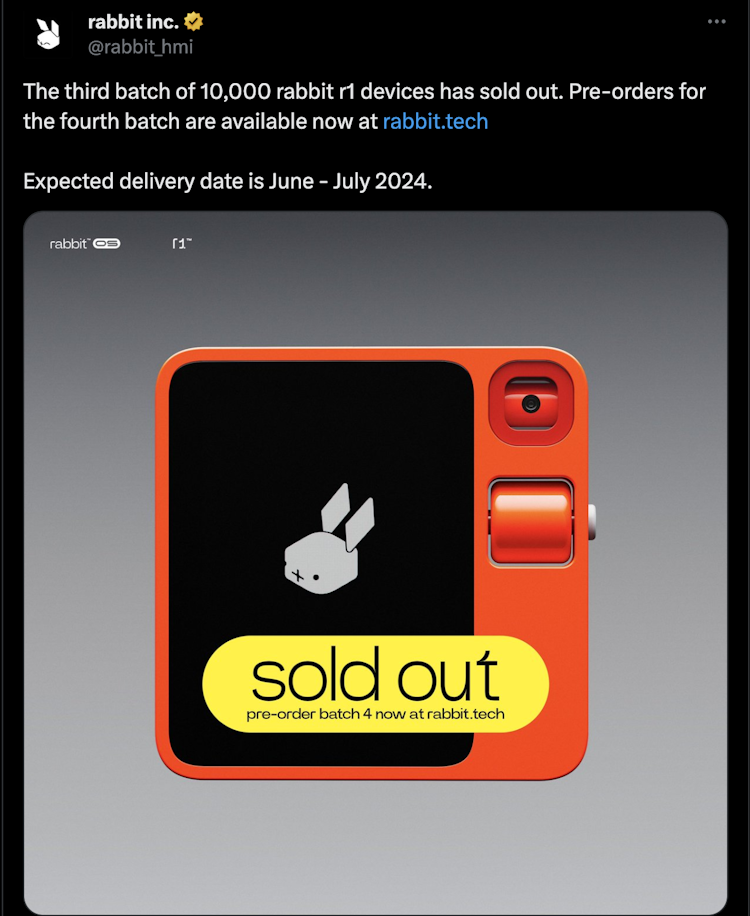
But is the hype sustainable?
It's too soon to say. The future for organizations can take two routes.
Route 1 — r1 Revolutionizes User Interactions, and There is Widespread Adoption
In this scenario, r1 gains widespread adoption, and devices become voice-first interaction conduits. User journeys become simpler, and organizations double down on delivering unique value propositions and differentiating themselves through exceptional customer experiences.
New business models also emerge, and r1's data-driven nature fosters innovative monetization models. Advertising becomes tailored, and data analysis becomes the cornerstone to gaining a competitive edge. Basically, everyone will have the power of Tony Stark’s Jarvis in the palm of their hands.
Developers shed the shackles of tech stacks and move to a new ecosystem of development where apps are not the prime focus. There is a new monetization market that focuses on AI-powered voice-first experiences.
Route 2: r1 Remains Limited in Impact, and There is Minimal Disruption
If r1 adoption takes off only in specific niches or user segments, its overall impact might be limited. Businesses with strong traditional app strategies will continue to thrive. A hybrid ecosystem may emerge where voice-first devices like r1 coexist with existing devices.
Consider how platforms like Grammarly and Notion inserted ChatGPT capabilities into their native platforms. Something similar can happen.
In this scenario, organizations focus on improving and refining their current offerings, prioritizing app optimization and user experience within established platforms with the updated perks of r1-like devices.
Only time and user adoption will tell which route we are going down. For the time being, the possibilities are limitless.
Dive deep into our research and insights. In our articles and blogs, we explore topics on design, how it relates to development, and impact of various trends to businesses.





